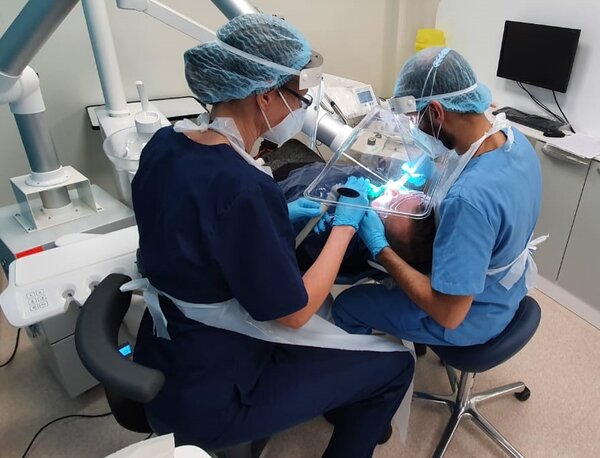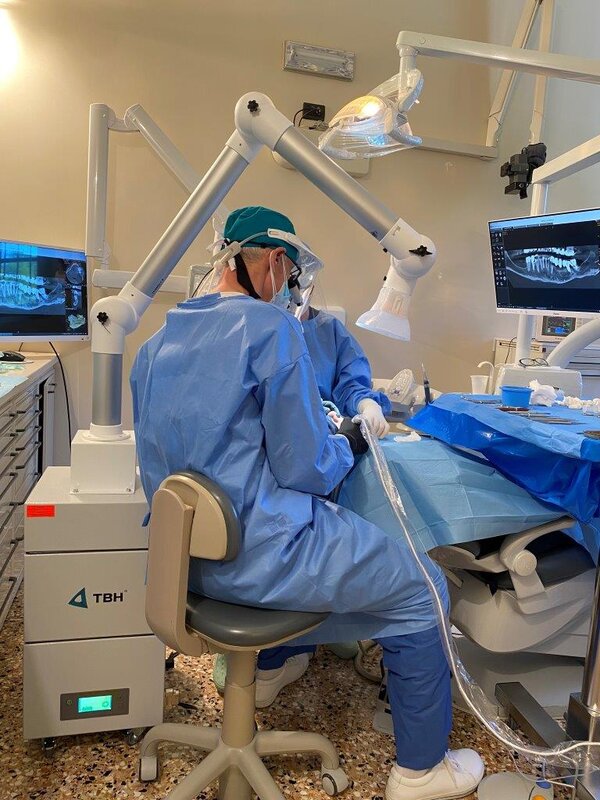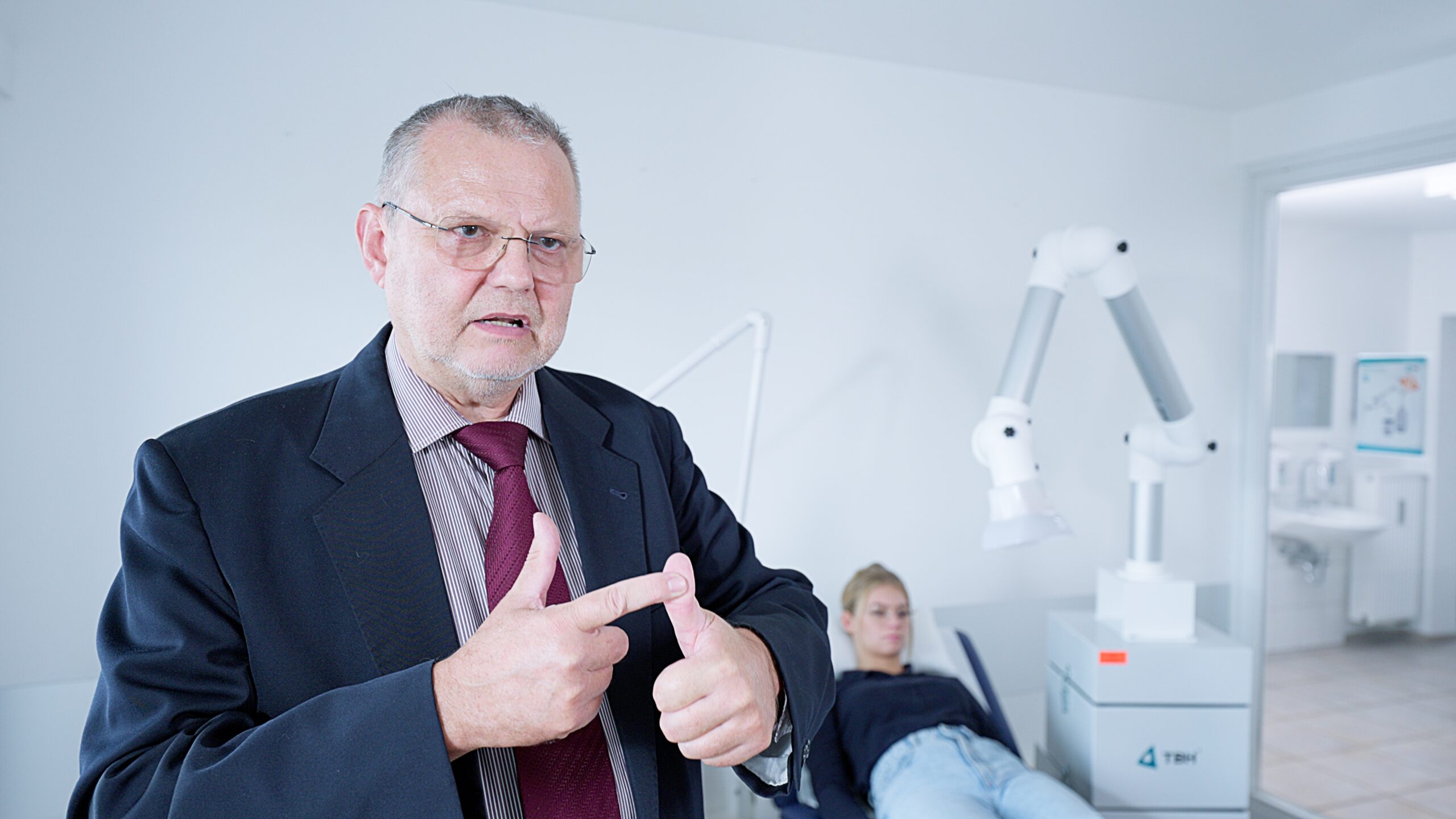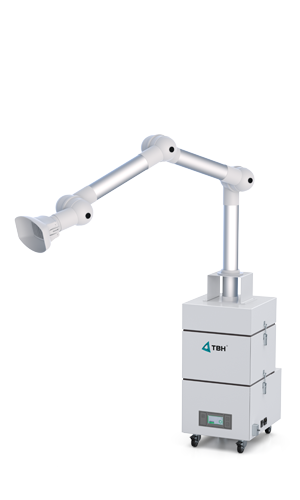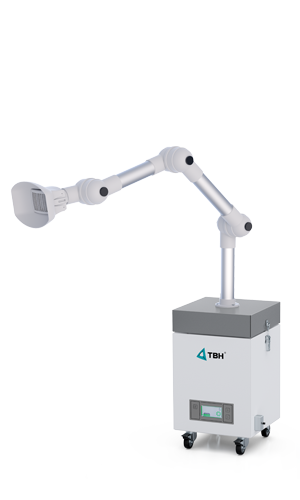As you know, absolute purity is very important.
We know how to comply with it.
Medical &
Aesthetics
Protect patients, staff, and yourself during laser treatments:
Our extraction technology filters harmful laser particles and fumes, minimizes the risk of infection, and ensures clean ambient air, in compliance with the regulations of the employers’ liability insurance associations.

By loading the video, you agree to Vimeo's privacy policy.
Learn more
Testimonial Dr. Hahn
About Dr. Helmut Hahn: He is a dermatologist and partner at the Berchtesgaden Skin & Laser Center and conference president of the DDL Congress. In the video, he explains why professional associations require the use of extraction systems to protect against airborne particles.
Themes
Hazards in dermatological practices
Surgical smoke is just as harmful as cigarette smoke. A tissue ablation of 1g produces smoke with the same mutagenicity as 6 unfiltered cigarettes. When using monopolar diathermy in a plastic surgery room, the daily smoke production is equivalent to about 27-30 cigarettes. Therefore, the Control of Substances Hazardous to Health Regulations (COSHH) in the UK, the German Berufsgenossenschaft für Gesundheitsdienst und Wohlfahrtspflege and the Occupational Safety and Health Administration in the USA recommend the use of smoke evacuators.
Sources: https://www.hse.gov.uk/healthservices/diathermy-emissions.htm, Surgical smoke – a health hazard in the operating theatre: a study to quantify exposure and a survey of the use of smoke extractor systems in UK plastic surgery units – PubMed (nih.gov), The Control of Substances Hazardous to Health Regulations (Northern Ireland) (COSHH) 2003 | Department of Health (health-ni.gov.uk), Erfahrungen und Gefährdungswahrnehmung von Chirurgen und pflegerischem Assistenzpersonal – Zur Prävention von chirurgischem Rauch im Operationssaal (asu-arbeitsmedizin.com), Chirurgische Rauchgase – Gefährdungen und Schutzmaßnahmen – bgw-online, Laser/Electrosurgery Plume – Overview | Occupational Safety and Health Administration (osha.gov)
You have a double obligation in this matter, also towards your patients. Consumer protection stipulates that you must ensure the greatest possible patient safety to guarantee that the patient does not suffer any harm because of your treatment. Harm can be caused not only by malpractice, such as incorrect lasering, but also if the patient inhales or ingests substances that may be carcinogenic or infectious. It is therefore of the utmost importance that you exercise maximum care.
The employers’ liability insurance association is showing an increased interest in ensuring occupational health and safety. You as the operator of the practice, are obliged to protect both your employees and yourself by preventing HPV viruses from being inhaled, which can lead to laryngeal papilloma or laryngeal carcinomas in the long term. It is therefore essential to use an extraction system.
A 44-year-old surgeon who had been treating anogenital condylomas and ulcerating cancer with a Nd:YAG laser for years was diagnosed with HPV-6 and 11-caused laryngeal papillomatosis, with no other known HPV contact sources other than his occupational exposure. A 28-year-old surgical nurse developed recurrent laryngeal papillomatosis due to HPV infection after repeatedly assisting with CO2 laser and electrocautery procedures on anogenital condylomas, which was recognized as an occupational disease.
A 62-year-old gynecologist with HPV-16-positive oropharyngeal carcinoma had over 30 years of experience in the removal of cervical and vulvar lesions using CO2 laser and LEEP and had no other risk factors. The same study described a 53-year-old gynecologist with HPV-16-positive tonsillar carcinoma who had been performing laser ablation and LEEP for over 20 years without adequate ventilation or protective measures, and no other risk factors were identified.
HPV DNA has been detected several times in laser smoke during ablation of papilloma and condylomas, but its infectivity has not yet been clearly proven. The risk of exposure for medical staff is significantly higher in the gynecological area than in the ENT area due to the larger tissue masses to be removed, but low if protective measures are observed.
Source: Frauenarzt-0898-0903-FORT_Willems_03.pdf (ag-cpc.de) and Thieme E-Journals – Laryngo-Rhino-Otologie / Abstract (thieme-connect.de)
All occupational health and safety guidelines, such as TRBA250, DGUV Rule 109-002 and the Employer’s Liability Insurance Associations, require extraction as a primary requirement and PPE = Personal Protective Equipment as a supplement.
Only an extraction system with HEPA filters tested according to EN 1822 guarantees optimal protection for patients, medical staff, and doctors.
Laser treatment of virus-infected tissue may result in the release of respirable aerosols containing infectious particles such as viruses or their genomes. Lower temperatures are at the edge of the point of entry; sterilization is achieved only at high temperatures. If larger fragments of virus-infected cells are torn from the tissue, the aerosol may contain intact viruses, such as HPV in warts, condylomas and papilloma, or adenoviruses in tear fluid during ophthalmic surgery.
To minimize risk, thermal vaporization techniques, such as Nd:YAG laser, should be preferred for such treatments. Plastics used in the treatment may be flammable. PVC produces hazardous gases such as HCI. If these gases come into contact with mucous membranes, the hydrochloric acid produced can cause tissue burns and, if inhaled, collapse of the alveoli. Technical protective measures such as standard laser equipment, correct extraction of combustion products, use of activated carbon or HEPA filters, and safe handling of chemicals, are essential to protect personnel and ensure safety.
Source: FA Info_005_Laser in der Medizin_151109 (bgetem.de) (German)
The capture element of a filter and extraction system must be matched to the process. An InLine filter in the capture element serves as a pre-filter, capturing the coarsest particles at their point of origin and preventing them from entering the extraction arm and reaching the filters in the system. This minimizes cleaning time.
The effectiveness of the TBH hygiene concept for the residue-free removal of contaminants in the system was tested by the accredited test laboratory CleanControlling Medical GmbH & Co. KG in Emmingen-Liptingen, Germany. The system and its accessories can be effectively cleaned in a few simple steps. The InLine filter should be changed daily or at least once a week, depending on the frequency of use.
Applications
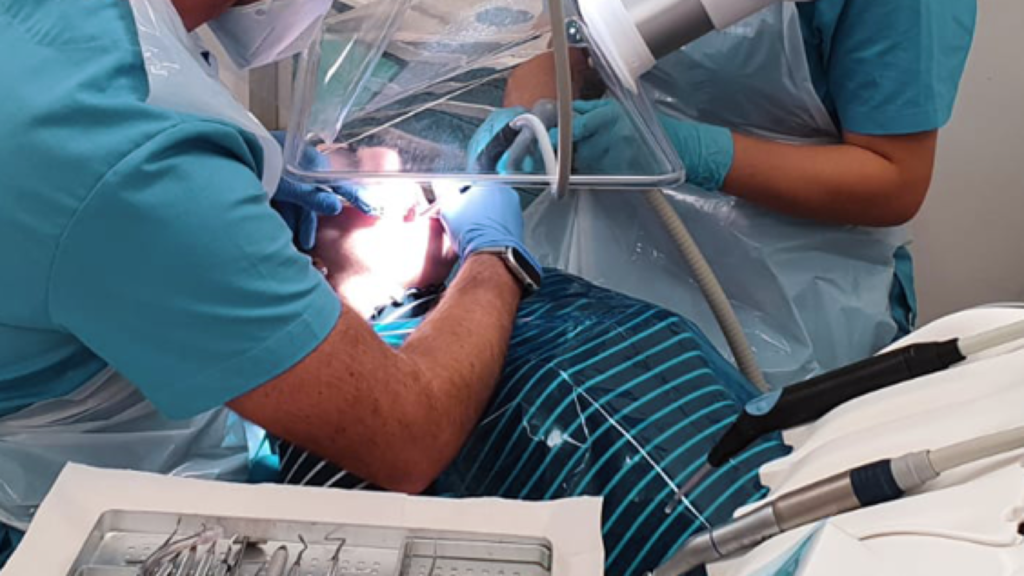
Dental Aerosol Extraction
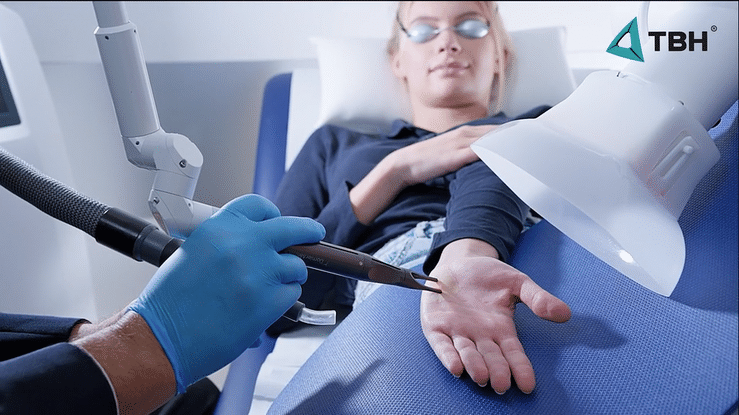
Removing lesions with laser
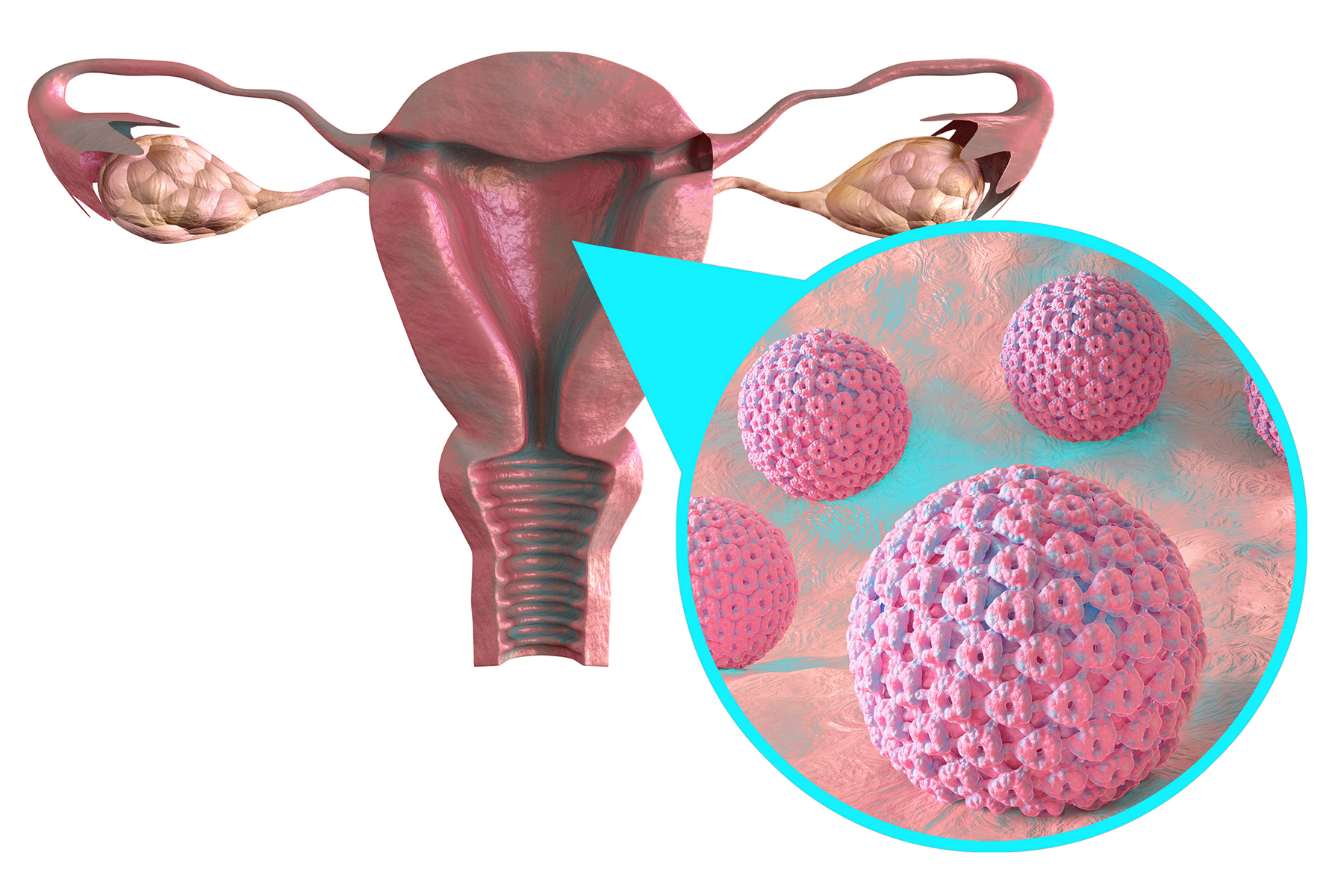
Gynecology
Medical staff who perform laser treatments, such as in gynaecology, are exposed to increased risks of HPV-related diseases such as laryngeal papillomatosis and oropharyngeal carcinomas. An extraction system offers effective protection.
Stories by two customers
